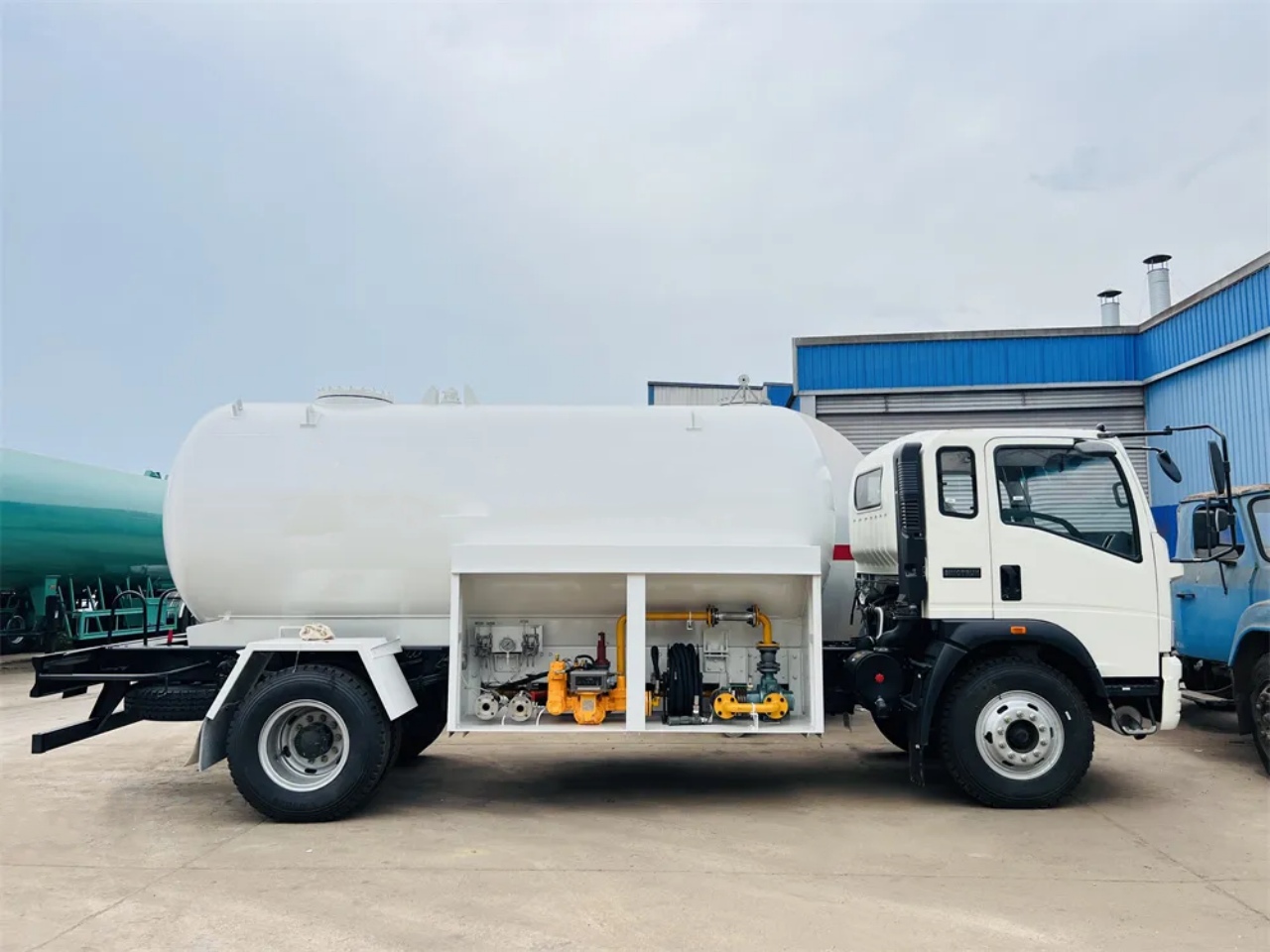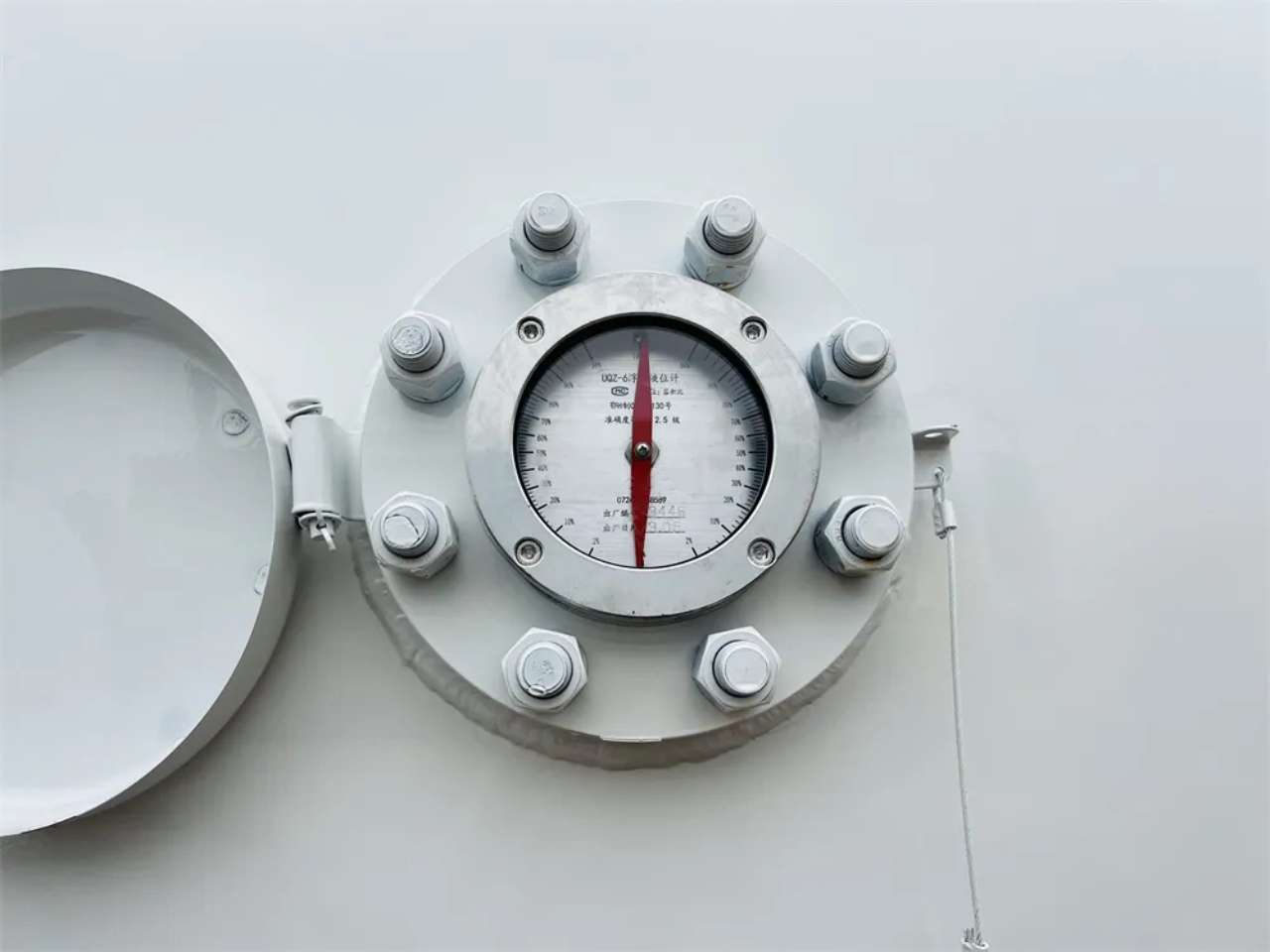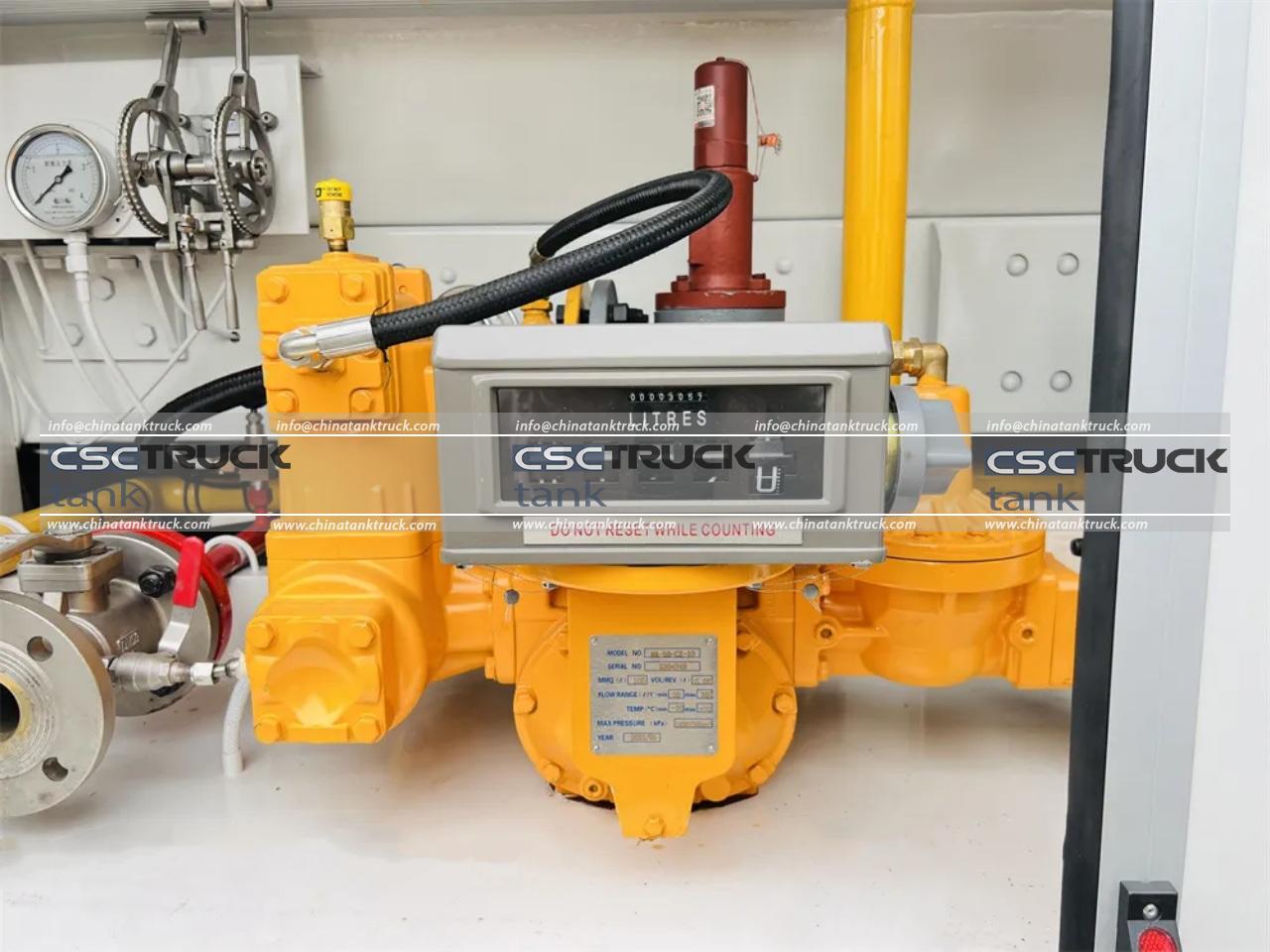Introduction
LPG (Liquefied Petroleum Gas) dispenser trucks play a crucial role in the transportation and distribution of LPG, a widely used fuel for residential, commercial, and industrial applications. These specialized vehicles are designed to safely and efficiently transport LPG from bulk storage facilities to end-users, including households, businesses, and fuel stations. This article explores the functions, components, working principles, safety features, and applications of LPG dispenser trucks.
What is an LPG Dispenser Truck?
An LPG dispenser truck is a specialized tanker vehicle equipped with an LPG storage tank, metering system, and dispensing equipment for delivering LPG to customers. Unlike standard LPG transport tankers, which primarily transfer gas from one bulk storage facility to another, LPG dispenser trucks are designed for direct distribution and on-site refueling.

Components of an LPG Dispenser Truck
LPG dispenser trucks consist of several key components that ensure the safe and efficient transportation and distribution of LPG:
- LPG Storage Tank: The primary component of the truck, typically constructed from high-strength carbon steel or stainless steel and designed to withstand high pressure.
- Dispenser Unit: The section responsible for metering and controlling the flow of LPG during dispensing. It includes flow meters, valves, and hoses.
- Pump System: A pump that enables the transfer of LPG from the storage tank to the customer’s container or refueling station.
- Hose Reel and Nozzle: A retractable hose with a specialized nozzle for safe and controlled LPG delivery.
- Vapor Return System: A feature that helps maintain pressure balance during refueling and prevents excessive gas emissions.
- Safety Valves and Pressure Relief Devices: Essential components to ensure the safe operation of the truck by preventing overpressure situations.
- Control Panel and Monitoring System: The operator’s interface for monitoring LPG levels, pressure, and operational parameters.
- Chassis and Suspension System: The base structure that supports the tank and equipment, usually built on a heavy-duty truck chassis for stability and durability.
How Does an LPG Dispenser Truck Work?
The operation of an LPG dispenser truck involves several key steps to ensure the safe transfer of LPG from the vehicle to the receiving storage unit:
- Loading the LPG: The truck is loaded with LPG from a bulk storage facility through a secure and controlled filling process.
- Transportation to the Destination: The truck travels to the designated delivery location, ensuring adherence to safety regulations.
- Pre-Dispensing Checks: The operator inspects the system, including hose connections, pressure levels, and safety valves, before initiating dispensing.
- LPG Dispensing Process: Using the pump system, LPG is transferred through the hose and nozzle to the receiving tank. The metering system ensures accurate measurement.
- Vapor Return Management: The vapor return system balances pressure levels to minimize emissions and enhance safety.
- Completion and Safety Checks: After dispensing, the operator ensures all valves are closed, checks for leaks, and secures the equipment before moving to the next delivery.

Safety Features and Regulations
LPG dispenser trucks are equipped with multiple safety features to prevent accidents and ensure compliance with industry regulations:
- Emergency Shutoff Valves: Enable quick cessation of gas flow in case of an emergency.
- Pressure Relief Valves: Prevent excessive pressure buildup within the tank.
- Fire Suppression System: Some models include onboard fire suppression systems to mitigate fire risks.
- Explosion-Proof Electrical Components: Prevent ignition of LPG vapors due to electrical sparks.
- GPS Tracking and Remote Monitoring: Many modern LPG dispenser trucks include GPS tracking and remote monitoring for route optimization and security.
- Adherence to Regulatory Standards: Trucks are built to comply with national and international safety regulations, such as ADR (European Agreement concerning the International Carriage of Dangerous Goods by Road), DOT (Department of Transportation) standards, and ASME (American Society of Mechanical Engineers) codes.
Applications of LPG Dispenser Trucks
LPG dispenser trucks are used across various industries and applications, including:
- Household LPG Supply: Direct delivery of LPG cylinders and bulk LPG to residential users.
- Commercial and Industrial Use: Supplying LPG to hotels, restaurants, factories, and agricultural businesses.
- Autogas Refueling: Many LPG dispenser trucks serve as mobile refueling stations for LPG-powered vehicles.
- Remote and Rural Areas: Providing LPG distribution in areas without fixed infrastructure for gas supply.
- Emergency Fuel Supply: Used during natural disasters or fuel shortages to provide LPG to affected areas.

Advantages of LPG Dispenser Trucks
- Enhanced Mobility: Ability to reach customers in remote locations where stationary LPG stations are unavailable.
- Cost-Effective Distribution: Reduces the need for permanent LPG storage and distribution centers.
- Flexibility in Operations: Suitable for various delivery models, including on-demand and scheduled refueling services.
- Increased Safety and Compliance: Designed with advanced safety features to minimize risks associated with LPG transportation.
- Environmentally Friendly: LPG is a cleaner fuel compared to diesel and gasoline, making dispenser trucks a sustainable fuel distribution solution.
Challenges and Considerations
Despite their advantages, LPG dispenser trucks also face certain challenges:
- Regulatory Compliance: Operators must adhere to strict regulations governing LPG transport and dispensing.
- Safety Risks: Although designed for safety, improper handling can lead to fire hazards and gas leaks.
- Operational Costs: Maintenance and compliance costs can be high due to the specialized nature of the equipment.
- Infrastructure Requirements: Some areas may require additional infrastructure, such as refueling stations or storage facilities, for efficient operations.

Conclusion
LPG dispenser trucks are vital for the efficient and safe distribution of LPG to a wide range of consumers. Their advanced design, safety features, and operational flexibility make them indispensable in the energy and fuel distribution industry. As technology continues to improve, these trucks will become even more efficient, environmentally friendly, and capable of meeting the growing demand for LPG worldwide.

